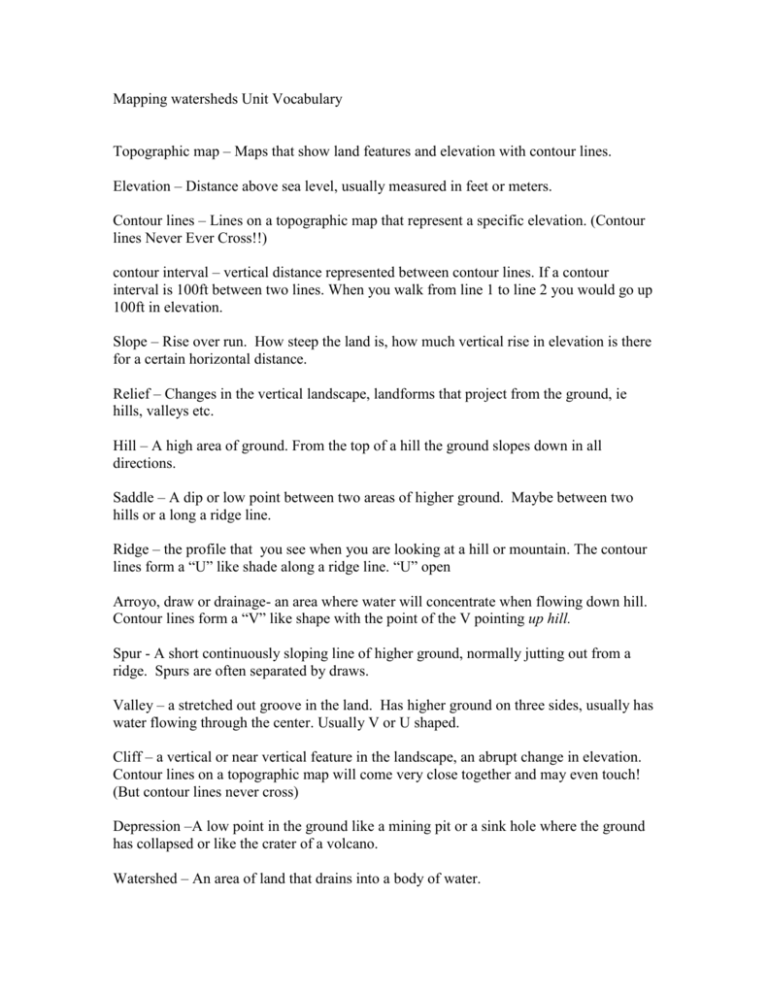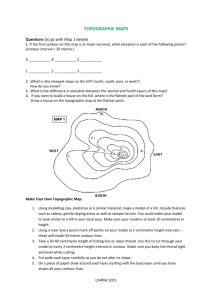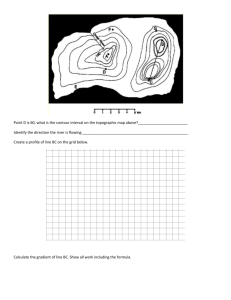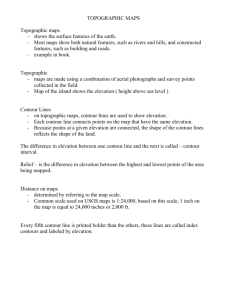Mapping Watersheds Vocab
advertisement

Mapping watersheds Unit Vocabulary Topographic map – Maps that show land features and elevation with contour lines. Elevation – Distance above sea level, usually measured in feet or meters. Contour lines – Lines on a topographic map that represent a specific elevation. (Contour lines Never Ever Cross!!) contour interval – vertical distance represented between contour lines. If a contour interval is 100ft between two lines. When you walk from line 1 to line 2 you would go up 100ft in elevation. Slope – Rise over run. How steep the land is, how much vertical rise in elevation is there for a certain horizontal distance. Relief – Changes in the vertical landscape, landforms that project from the ground, ie hills, valleys etc. Hill – A high area of ground. From the top of a hill the ground slopes down in all directions. Saddle – A dip or low point between two areas of higher ground. Maybe between two hills or a long a ridge line. Ridge – the profile that you see when you are looking at a hill or mountain. The contour lines form a “U” like shade along a ridge line. “U” open Arroyo, draw or drainage- an area where water will concentrate when flowing down hill. Contour lines form a “V” like shape with the point of the V pointing up hill. Spur - A short continuously sloping line of higher ground, normally jutting out from a ridge. Spurs are often separated by draws. Valley – a stretched out groove in the land. Has higher ground on three sides, usually has water flowing through the center. Usually V or U shaped. Cliff – a vertical or near vertical feature in the landscape, an abrupt change in elevation. Contour lines on a topographic map will come very close together and may even touch! (But contour lines never cross) Depression –A low point in the ground like a mining pit or a sink hole where the ground has collapsed or like the crater of a volcano. Watershed – An area of land that drains into a body of water. Watershed boundary – line that divides watershed and where water will flow. A rain drop that lands on one side of the boundary will flow into one body of water, a drop that lands on the other side will flow into a different body of water. GPS – Global Positioning System, technology that uses satellites and atomic clocks to find position on earth. GIS –Geographic Information System, a computer program that allows you to map any variable that you can think of as a layer, multiple layers can be displayed on a map and patterns between variables can be detected. Latitude – imaginary horizontal lines around the globe that tell your distance from the equator. Longitude –Imaginary vertical lines that surround the globe the stretch from pole to pole. Measured in degrees as the distance from the prime meridian which passes though Greenwich, England. Coordinates –a set of two numbers that can tell you your position on Earth, such as your latitude and longitude.








